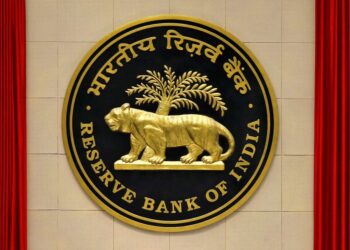India’s economic growth has been in discussion for a long time. From becoming a USD 5 trillion economy by 2027 to becoming the world’s third-largest economy by 2030, several projections have been made showing the growth trajectory of the country. In a latest update, S&P Global Market Intelligence has stated that India is likely to overtake Japan to become the world’s third-largest economy with a GDP of USD 7.3 trillion by 2030.
“After rapid economic growth of 7.2% in the 2022-23 fiscal year, economic momentum has remained strong, with industrial production rising by 10.3% year-over-year (y/y) in August 2023 and GDP growth of 7.8% y/y in the April-June quarter of 2023. The S&P Global India Services PMI Business Activity Index for September signaled continued rapid expansion for output and new orders, while the September Manufacturing PMI survey also showed strong manufacturing operating conditions,” S&P Global stated.
After rapid economic growth in 2021 and 2022, the Indian economy even continued to show sustained strong growth in 2023. “The near-term economic outlook is for continued rapid expansion during the remainder of 2023 and for 2024, underpinned by strong growth in domestic demand,” the report added.
India’s nominal GDP measured in USD terms is forecast to rise from USD 3.5 trillion in 2022 to USD 7.3 trillion by 2030. This rapid pace of economic expansion would result in the size of the Indian GDP exceeding Japanese GDP by 2030, making India the second largest economy in the Asia-Pacific region. By 2022, the size of Indian GDP had already become larger than the GDP of the UK and also France. By 2030, India’s GDP is also forecast to surpass Germany.
According to a report by the Indian Express quoting PTI, India’s gross domestic product (GDP) is expected to grow 6.2-6.3 per cent in the fiscal year ending in March 2024, being the fastest-growing major economy this fiscal year. Asia’s third-largest economy grew by a stellar 7.8 per cent in the April-June quarter.
Notably, The US is the world’s largest economy with a GDP of USD 25.5 trillion at present, followed by China with a GDP size of about USD 18 trillion. Japan stands third with USD 4.2 trillion GDP, followed by Germany with USD 4 trillion GDP.
S&P Global further informed that the long-term outlook for the Indian economy is supported by a number of key growth drivers. “An important positive factor for India is its large and fast-growing middle class, which is helping to drive consumer spending. The rapidly growing Indian domestic consumer market as well as its large industrial sector have made India an increasingly important investment destination for a wide range of multinationals in many sectors, including manufacturing, infrastructure and services,” it said.
The digital transformation of India that is currently underway is expected to accelerate the growth of e-commerce, changing the retail consumer market landscape over the next decade. This is attracting leading global multinationals in technology and e-commerce to the Indian market.
“By 2030, 1.1 billion Indians will have internet access, more than doubling from the estimated 500 million internet users in 2020. The rapid growth of e-commerce and the shift to 4G and 5G smartphone technology will boost home-grown unicorns like online e-commerce platform Mensa Brands, logistics startup Delhivery and the fast-growing online grocer BigBasket, whose e-sales have surged during the pandemic,” it said.
India’s strong FDI inflows have been boosted by large inflows of investments from global technology MNCs such as Google and Facebook that are attracted to India’s large, fast-growing domestic consumer market, as well as a strong upturn in foreign direct investment inflows from manufacturing firms.
Overall, India is expected to continue to be one of the world’s fastest growing economies over the next decade. This will make India one of the most important long-term growth markets for multinationals in a wide range of industries, including manufacturing industries such as autos, electronics and chemicals to services industries such as banking, insurance, asset management, health care and information technology.








